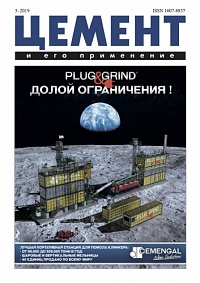In 2013, intensive construction and commissioning of new cement production facilities equipped with modern process equipment began in the Republic of Tajikistan. This allowed the republic in the shortest possible time to cover its own requirements for cement and become ...
Globally, industrial plants are seeking to take advantage of disruptive digital technologies as part of a trend known as Industry 4.0. One of the most disruptive of these technologies is automation, as it has the potential to impact the current human operators of indust...
The EUROCEMENT group holding company is realizing small-scale electricity generation schemes at its plants. Today, captive power plants operate at five factories of the company. This makes it possible to ensure uninter- rupted power supply, increase energy efficiency an...
At the end of 2018, the installation of a dynamic separa- tor with cyclones began at the Slantsy CESLA cement plant, part of the HeidelbergCement group of companies, which will significantly increase the production rate of the cement grinding shopfloor and improve the c...
In order to improve competitiveness in the long run, the leading cement producers in Russia are carrying out modernization programs for production facilities at their plants. One of the main areas is the modification of the logistics equipment using flexible and modern ...
From a kiln cooling system to silos: the safe and econom- ical transportation of hot materials like clinker is crucial in cement plants. The material can have extremely high temperatures of 500 to 800 degrees Celsius. Reliable plant operation requires a robust conveying...
As the results of compressive strength tests of cement show, when rapid testing is used, the instruments must be calibrated against the data obtained during tests according to GOST 30744-2001. However, even in this case the readings do not allow predicting the strength ...
The principle of operation of the Ultrasonic IP 8 system, developed by Ultratest (Germany) and supplied to Russia by OOO RVS, is based on measuring the propagation speed of ultrasonic waves in a sample of the material in-situ. The system makes it possible to tes...
Refractory mixtures manufactured by Gamma Spets- ogneupor are used in cement and a number of other industries to repair various thermal units. Among these products are Gamma series mortars, which use the method of self-propagating high-temperature synthesis (SHS)...
The paper presents the results of a study of the structure and physical mechanical properties (medium density, compressive strength and water absorption) of no-fines lightweight concrete made from a mixture of Portland ce- ment, a complex nanodispersed additive ...


